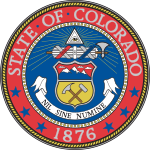| |||||||||||||||||
| |||||||||||||||||
 County results Johnson: 50–60% 60–70% 70–80% | |||||||||||||||||
| |||||||||||||||||
| Elections in Colorado |
|---|
 |
The 1948 United States Senate election in Colorado took place on November 2, 1948. Incumbent Democratic Senator Edwin C. Johnson was re-elected to third term in a landslide over Republican Will Nicholson, a businessman and Air Force veteran, winning every county in the state.
Contents
- Democratic primary
- Candidates
- Results
- Republican primary
- Candidates 2
- Results 2
- General election
- Results 3
- See also
- References
Johnson outperformed fellow Democrat Harry S. Truman in the concurrent presidential election by 29%. As of 2023, this is the last time that an incumbent Democratic Senator from Colorado was re-elected or won re-election for this seat.

